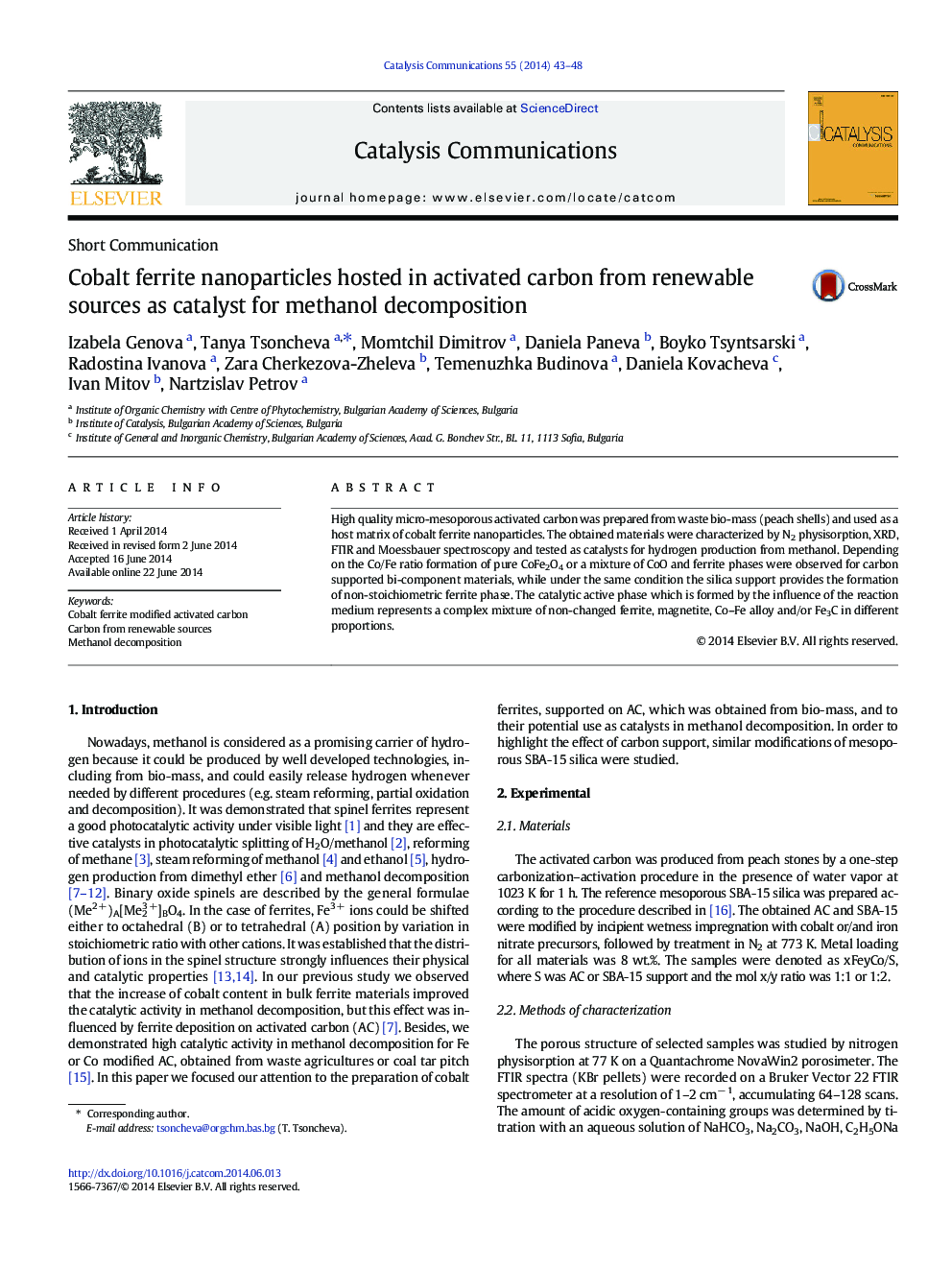| کد مقاله | کد نشریه | سال انتشار | مقاله انگلیسی | نسخه تمام متن |
|---|---|---|---|---|
| 49495 | 46750 | 2014 | 6 صفحه PDF | دانلود رایگان |
• Phase composition of Co–Fe binary materials is controlled by Co/Fe ratio and support.
• Finely dispersed CoFe2O4 phase is supported on activated carbon from bio-mass.
• Catalytic activity depends on the final phase composition formed during catalysis.
• Contrary to Fe–Co alloy non-stoichiometric ferrite and Fe3C promote the activity.
High quality micro-mesoporous activated carbon was prepared from waste bio-mass (peach shells) and used as a host matrix of cobalt ferrite nanoparticles. The obtained materials were characterized by N2 physisorption, XRD, FTIR and Moessbauer spectroscopy and tested as catalysts for hydrogen production from methanol. Depending on the Co/Fe ratio formation of pure CoFe2O4 or a mixture of CoO and ferrite phases were observed for carbon supported bi-component materials, while under the same condition the silica support provides the formation of non-stoichiometric ferrite phase. The catalytic active phase which is formed by the influence of the reaction medium represents a complex mixture of non-changed ferrite, magnetite, Co–Fe alloy and/or Fe3C in different proportions.
Figure optionsDownload as PowerPoint slide
Journal: Catalysis Communications - Volume 55, 5 October 2014, Pages 43–48
